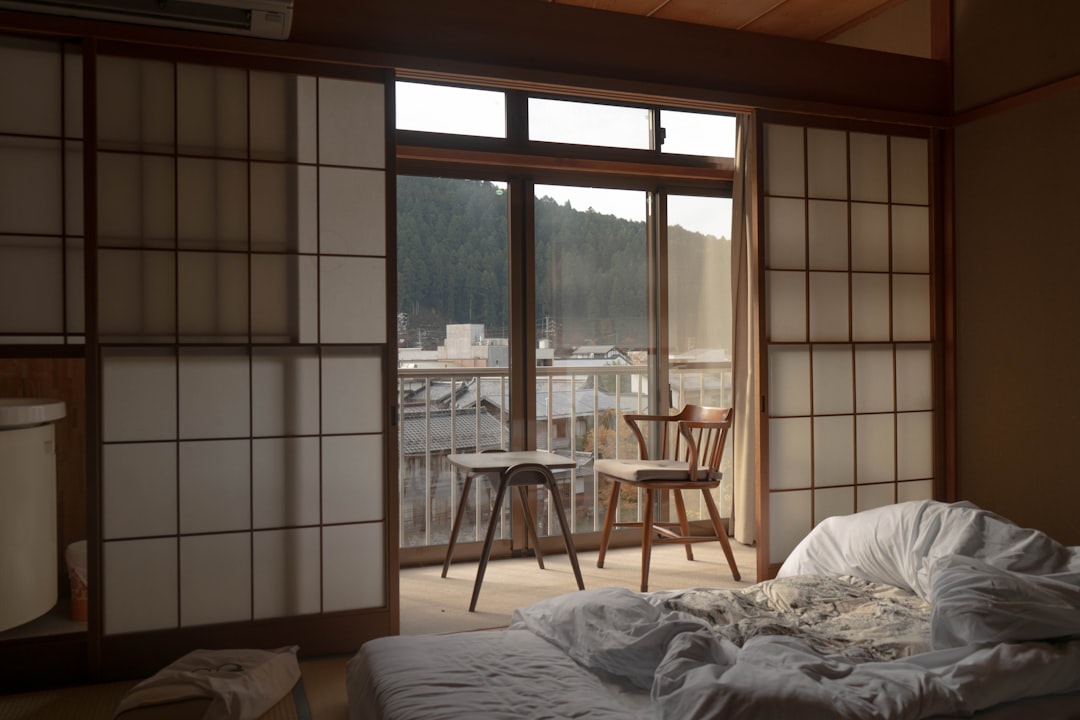We’ve talked a lot about the tatami mats, now let’s get to sleep.
As fellow humans, for the most part the biological process of sleep doesn’t really differ for the Japanese populace. What does change is their approach to sleep, which is manifested in the various accoutrements nestled atop the tatami mat. This will be a guide to the floor and various pillowed sleeping story of daily Japanese life.
Sleeping on the floor
I’ll start from the ground up. Ask someone in the wellness space what the benefits of floor sleeping are, and you could get different responses depending on their “school of thought”. Perhaps those who swear by paleo living and diet would tell you humans aren’t evolved to sleep on mattresses. Chiropractor followers might tell you that spinal alignment is suited to the floor. Minimalists could say that beds clutter space. In Japan the answer is simple.
Futons on the floor is how everyone sleeps (caveat that this statement was accurate before Western influences (but also caveat that this still applies to the majority of households)).
Build your own futon
Let’s quickly address the better-known companion to tatami rooms. It’s everyone’s favourite simple guest sleeping arrangement: let’s welcome the futon! While the reputation garnered by the futon in the West is one of sofas, makeshift beds and late nights, in Japan it is held in an elevated stature (elevated in culture, not location).
The futon is actually a multi layered system which consists of several intricate parts, rather than the Western take of a shabbily thrown together mess on the floor for unexpected guests. From the bottom up, there’s of course the pre-existing tatami mat.
The futon base (shikibuton/ 敷き布団) consists of more layers that look like a Western mattress topper, rather than mattress. For the uninitiated of floor sleeping, it’s common to layer multiple to build a more cushioned sleeping pose.
The shikibuton and tatami are a symbiotic relationship. With limited airflow that a floor mattress receives, tatami offers their unique breathing abilities to keep the mattress clean of any unpleasantness. Once you have covered your shikibuton with a bedsheet, your basic futon is ready for inaction (otherwise known as sleep).
Optional extras can be included such as a kakefuton. Imagine a weighted blanket traditionally made of hand pulled silk. The kakefuton is like the holy grail for fashion conscious, anxiety-ridden hipsters! You can always choose the no added covers, or go Western blankets or quilts, but even non floor sleepers have selected the kakefuton.

Choosing your pillows
This isn’t actually as simple as just one pillow sleeps all. Depending on your life stage or career, people have traditionally rested their heads on different objects. From the infamous to the actually beneficial, learn all about Japan’s pillows here.
Dakimakura
It needed to be addressed. Directly translating to hug pillow. For those who aren’t familiar, these are full-length body pillows, or more commonly known the waifu pillow. What that means is a human length (150-170 cm) pillow that usually has an image on it. Normally (perhaps the wrong word) this is a full body print of a popular character from anime or manga.
Please note that these are not exactly traditional, with most people placing the first ones developed in the 1990s. Coinciding with the rise of “otaku” culture, they have become a popular punching pillow as the practice is widely seen as creepy and weird. To defend the practice for a moment, I don’t believe these pillows are inherently wrong. I just see them as giant stuffed toys. Where the line for me is drawn, is when these pillows gets in the way of connections between real people, through being taken on dates, having relationships or even having them be marriage partners.
These types of stories are often publicised within the media, and have fuelled the persistent Japan-is-weird idea. It still remains that a tiny portion of a population which has committed so much towards these pillows. What is fair to say, is that these pillows might be one of the most surprising successful products, and do still remain a popular purchase among various anime fandoms. No recommendations from me.
Takamakura and Hakomakura
The polar opposite of dakimakura, being a traditional pillow that is not popularly used now. Takamakura is known as the Geisha pillow and the direct translation is high pillow. These had a singular purpose. Preservation of hairstyles.
The hairstyle associated with the geisha meant arduous hours of precise hair crafting. Much easier to craft a pillow around the hair, rather than messing the hair up. The Takamakura would allow the head to be elevated such that the hair never touched anything. Comfort was seldom a concern, but designers kindly included some wheat atop the wooden bench, which was essentially the whole of the pillow. It is like sleeping on an armrest.
Before we condemn ancient Japan for their treatment of women (or at least for this topic), wooden box pillows, or Hakomakura, were for men too. Like the Geishas, Samurai may have feared a bad hair day more than getting enough sleep for tomorrow’s battles. As if to add insult to neck injury, the slang term for both sorts of pillows were bachimakura (罰枕) or punishment pillow. Needless to say, these are no longer in common use.
Sobakawa Makura
We’ve covered very popular and modern pillows, and very unpopular and traditional pillows, but what do everyday Japanese people use with their futons? Yes, it’s the Goldilocks pillow that’s both traditional and popular.
Noting that cotton and memory foam pillows are also available and popular, the traditional sobakawa pillow still ranks as a bestseller according to Amazon. This is a nation that doesn’t judge pillows by their shape or the colour of their print, but by the content of their insides.
So… what’s inside? The hulls of buckwheat seeds. These are small black seeds that when a weight is applied can align to the contours of the body. The natural fibre of the material means the pillow keeps firm but springy and rustles when you sleep. If you are looking to buy them, they are in almost every homeware or bedding store in Japan, or at any rainforest-based online retailer. There are dozens of varieties of shape and material still, with many opting for a mix of sobakawa and memory foam.
Despite being used for hundreds of years in Japan, there has been a growing global popularity of these pillows in helping treat unsolvable migraines and headaches. While I cannot attest to such cures, the benefit I’ve most valued in pillows with sobakawa is their quality circulation. The 600-year-old pillows do not come with an air conditioner, but the gaps between each hull means that heat isn’t trapped as easily in them, keeping the pillow cooler in summer. No more flipping pillows unless makurageishi are around.
Makurageishi
Before letting you sleep easy, I will share this final tale which may be of aid when sleeping on Japanese pillows and futons. I’ll take you into the world of the pillow flipping ghosts. That’s the direct translation, and is as a good a translation as any.
While this post isn’t devoted to the yokai (supernatural beings of Japan), it would be remiss of me not to warn about Makurageishi. There are stories abound of people waking up with minor bedroom pranks such as having their pillow flipped or waking up on the wrong end of the bed. Rather than attribute these to forgetfulness or loutish drunken behaviour, these are all the work of Makurageishi.
Why do these ghosts even bother with such a prank?
The meaning of this harmless prank was to trap the sleeper in an unconscious dream state. The belief was that by tampering with the bed setup while asleep, the soul wouldn’t be able to return to its body after the dream. Spooky behaviour that most people want to avoid. Ancient belief in these ghosts would almost make you want a heavier hakomakura pillow. Let’s see that ghost try to move a heavy wooden box!






Great post! I learnt a lot
Very informative and your posts always make me want to move to Japan with my family 🥲